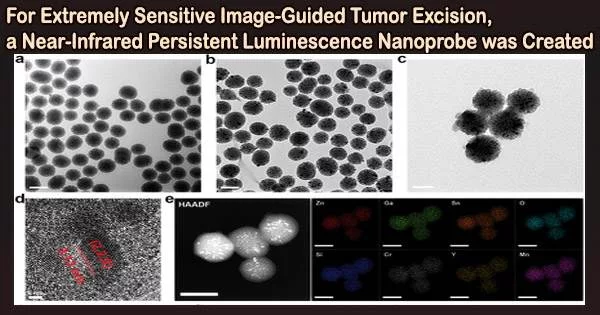In order to distinguish tumor margins during tumor resection surgery, surgeons typically rely on visual cues, touch, and experience, which increases the likelihood of tumor residues. Medical imaging technology such as magnetic resonance imaging (MRI), computed tomography (CT), and X-ray cannot provide real-time images during tumor resection surgery.
Near-infrared (NIR) fluorescence imaging provides several benefits over conventional medical imaging, including real-time use, high sensitivity, high resolution, and no radiation. However, for tiny tumor residues, it requires relatively high sensitivity.
In a study published in Advanced Science, the research group led by Prof. Zhang Yun from Fujian Institute of Research on the Structure of Matter of the Chinese Academy of Sciences has developed a novel ultrasensitive nanoprobe (mZGS@Mn-AMD) with ultrahigh tumor/normal tissue (T/NT) signal ratio to distinguish residual tumor tissues from normal tissues.
Because persistent luminous nano-core (mZGS) does not require constant excitation and does not encounter background fluorescence interference from biological tissues during imaging, it has a high sensitivity.
The researchers increased the sensitivity of tumor imaging by quenching persistent luminescence (PersL) in normal tissue by the outer layer of MnO2 and recovering it due to the breakdown of MnO2 in tumor microenvironments.
The intraoperative tumor-to-normal tissue (T/NT) signal ratio of the nanoprobe in an orthotopic breast cancer model was 58.8, which is around nine times that of down-conversion nanoparticles. The T/NT ratio of residual tumor (< 2 mm) remained 12.4, considerably high to distinguish tumor tissue from normal tissue.
Additionally, models of multiple-microtumor, 4T1 liver-implanted tumor, and lung metastasis were created to demonstrate the capability of this ultrasensitive nanoprobe to detect tumor remnants.
In order to enable complete surgical removal, this work provides an ultrasensitive and practical imaging approach for identifying remaining tumor tissue.





